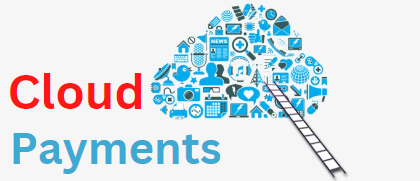Cloud-based Peer-to-Peer Payments: A Detailed Guide
In today’s digital age, the way we handle financial transactions has undergone a significant transformation. One such innovation that has gained immense popularity is cloud-based peer-to-peer payments. This technology allows individuals to transfer money directly from one person to another using cloud-based platforms, eliminating the need for traditional banking intermediaries.
In this comprehensive guide, we will delve into the world of cloud-based peer-to-peer payments, exploring its basics, benefits, security measures, popular platforms, setting up procedures, payment methods, financial management, and future trends.
Understanding the Basics of Peer-to-Peer Payments
Peer-to-peer payments, also known as P2P payments, refer to the transfer of funds between individuals without the involvement of a financial institution. This method leverages technology to facilitate direct transactions, making it convenient and efficient for users. Unlike traditional payment methods that require bank accounts or credit cards, P2P payments can be made using mobile devices, making it accessible to a wider audience.
One of the key advantages of P2P payments is the speed at which transactions can be completed. With traditional methods, it often takes several business days for funds to be transferred. However, with P2P payments, the transfer is almost instantaneous, allowing users to send and receive money in real-time.
Exploring the Benefits of Cloud-based Peer-to-Peer Payments
Cloud-based peer-to-peer payments offer numerous benefits to users. Firstly, it provides a convenient and hassle-free way to transfer money. Users can make payments anytime, anywhere, as long as they have an internet connection. This eliminates the need to carry cash or visit a physical bank branch.
Secondly, cloud-based P2P payments are cost-effective. Traditional payment methods often involve transaction fees, especially for international transfers. However, most cloud-based P2P platforms offer free or low-cost transactions, making it an attractive option for users.
Furthermore, cloud-based P2P payments promote financial inclusion. In many developing countries, a significant portion of the population remains unbanked or underbanked. Cloud-based P2P platforms provide these individuals with access to financial services, allowing them to send and receive money easily.
Security Measures in Cloud-based Peer-to-Peer Payments
Security is a crucial aspect of any financial transaction, and cloud-based P2P payments are no exception. To ensure the safety of user data and funds, these platforms employ various security measures.
One common security measure is encryption. Cloud-based P2P platforms use advanced encryption algorithms to protect user information during transmission. This ensures that sensitive data, such as bank account details or personal identification, remains secure.
Additionally, many platforms implement multi-factor authentication. This requires users to provide multiple forms of verification, such as a password and a unique code sent to their mobile device, before accessing their accounts or making transactions. This adds an extra layer of security, reducing the risk of unauthorized access.
Popular Cloud-based Peer-to-Peer Payment Platforms
Several cloud-based P2P payment platforms have gained popularity in recent years. One of the most well-known platforms is PayPal. With over 377 million active users worldwide, PayPal allows individuals to send and receive money securely. It also offers additional features such as invoicing and online shopping integration.
Another popular platform is Venmo, which is particularly popular among younger users. Venmo allows users to split bills, pay friends, and even make purchases at select merchants. It also offers a social feed feature, allowing users to see and interact with their friends’ transactions.
Step-by-Step Guide to Setting Up Cloud-based Peer-to-Peer Payments
Setting up cloud-based P2P payments is a straightforward process. Here is a step-by-step guide to help you get started:
- Choose a platform: Research and select a cloud-based P2P payment platform that suits your needs. Consider factors such as user interface, security features, and transaction fees.
- Create an account: Visit the platform’s website or download the mobile app. Sign up by providing the required information, such as your name, email address, and phone number.
- Link your bank account: To send and receive money, you will need to link your bank account or credit card to the platform. Follow the instructions provided to complete this step securely.
- Verify your identity: Some platforms may require you to verify your identity to comply with regulatory requirements. This typically involves providing additional information or submitting identification documents.
- Set up security features: Enable security features such as multi-factor authentication and notifications to enhance the security of your account.
- Add contacts: To send money to others, you will need to add their contact information to your account. This can be done by searching for their username or email address associated with their P2P payment account.
- Initiate a transaction: Once your account is set up, you can initiate a transaction by entering the recipient’s details and the amount you wish to send. Review the transaction details and confirm the payment.
- Receive and withdraw funds: When someone sends you money, it will be credited to your P2P payment account. You can then choose to keep the funds in your account or withdraw them to your linked bank account.
How to Make Payments Using Cloud-based Peer-to-Peer Platforms
Making payments using cloud-based P2P platforms is a simple process. Here are the steps to follow:
- Log in to your P2P payment account using your credentials.
- Navigate to the payment or send money section of the platform.
- Enter the recipient’s details, such as their username, email address, or phone number associated with their P2P payment account.
- Specify the amount you wish to send and select the currency if applicable.
- Review the transaction details, including the recipient’s information and the amount to be sent.
- Confirm the payment and wait for the transaction to be processed. Depending on the platform, the recipient may receive a notification or email informing them of the payment.
Managing Finances and Tracking Transactions in Cloud-based Peer-to-Peer Payments
Cloud-based P2P payment platforms offer various features to help users manage their finances and track transactions effectively. These features provide users with insights into their spending habits and allow them to keep track of their financial activities.
One common feature is transaction history. Cloud-based P2P platforms maintain a record of all transactions made by the user, including the date, time, recipient, and amount. Users can access this transaction history to review their past payments and track their spending.
Additionally, many platforms offer budgeting tools. These tools allow users to set spending limits, categorize transactions, and receive notifications when they exceed their budget. This helps users stay on top of their finances and make informed financial decisions.
Future Trends and Innovations in Cloud-based Peer-to-Peer Payments
The world of cloud-based P2P payments is constantly evolving, with new trends and innovations shaping the industry. One such trend is the integration of voice assistants. Some platforms now allow users to make P2P payments using voice commands, making the process even more convenient and hands-free.
Another emerging trend is the integration of blockchain technology. Blockchain offers enhanced security and transparency, making it an attractive option for P2P payments. By leveraging blockchain, platforms can provide users with a tamper-proof record of transactions, reducing the risk of fraud or manipulation.
Frequently Asked Questions about Cloud-based Peer-to-Peer Payments
Q.1: Are cloud-based peer-to-peer payments secure?
Yes, reputable platforms employ robust security measures to protect users’ financial information. However, it is essential to follow best practices and be cautious when sharing payment details.
Q.2: Are there any fees associated with cloud-based peer-to-peer payments?
Most platforms offer free transfers between individuals, but fees may apply for certain transactions, such as business payments or international transfers.
Q.3: Can I use cloud-based peer-to-peer payments for business transactions?
Yes, many platforms offer business accounts and additional features tailored to meet the needs of businesses, such as invoicing and integration with accounting software.
Q.4: Can I transfer funds between different payment platforms?
Interoperability between platforms can vary, and users may encounter difficulties transferring funds between platforms that do not have direct integration. However, efforts are being made to improve interoperability.
Q.5: What happens if I accidentally send money to the wrong person?
Most platforms have dispute resolution mechanisms in place to address such situations. Users can typically request a refund or contact customer support for assistance.
Conclusion
Cloud-based peer-to-peer payments have revolutionized the way we transfer money, offering convenience, speed, and cost-effectiveness. With the ability to send and receive funds in real-time, users can now manage their finances more efficiently. However, it is crucial to prioritize security when using cloud-based P2P payment platforms. By following the recommended security measures and choosing reputable platforms, users can enjoy the benefits of this innovative technology while keeping their funds and personal information safe. As the industry continues to evolve, we can expect to see more advancements and features that further enhance the user experience and redefine the way we handle financial transactions.











